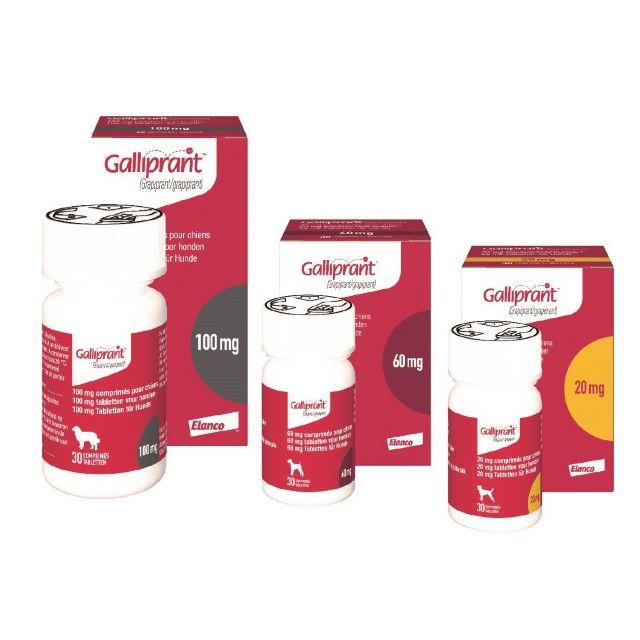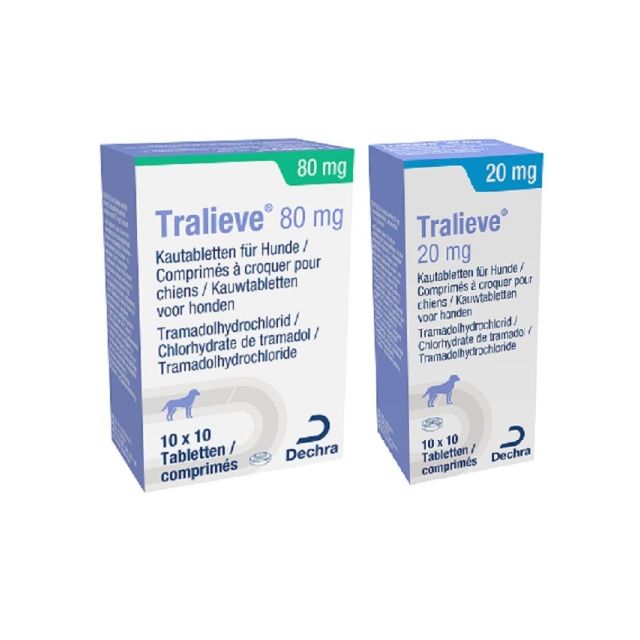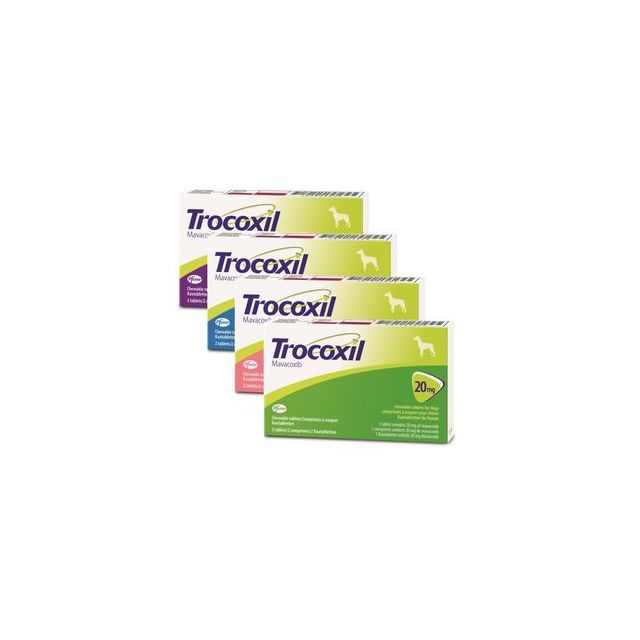Painkillers for the dog
Pain is at best annoying and at worst life-defining. Pain can even be a reason for euthanasia. Over the last few decades, there have been many developments in the field of pain relief, making a wide variety of painkillers and combinations of painkillers available today. This has improved the ability to combat pain in dogs more effectively, specifically, and safely.
Pain in Dogs
Pain indicates that there is or could be damage to the body and serves to prevent further damage. If moving a leg hurts, the dog will avoid doing so, allowing the injury to heal faster. If the pain is severe or persists, it negatively affects the quality of life and will actually slow down recovery.
A dog can experience pain anywhere in its body. Recognizing pain can sometimes be quite difficult. If a dog whimpers, whines, or refuses to put weight on a leg, it's clear that it is in pain. But often the signals are much subtler, which means pain is often discovered late, or the stiff gait of a dog in pain from arthritis is dismissed as old age. Therefore, it's important to recognize pain.
Types of Painkillers for Dogs
Just like for humans, there are different types of pain relief for dogs. The choice of a painkiller is made by the veterinarian based on the type of pain, its severity, the location of the pain, and the health condition of the dog. All painkillers for dogs can only be prescribed after a clinical examination by a veterinarian.
NSAIDs
The most commonly used painkiller in dogs is the NSAID, the non-steroidal anti-inflammatory drug. This anti-inflammatory and fever-reducing painkiller is usually the first choice for issues with the musculoskeletal system, after surgery, for inflammations, fever, or injuries.
NSAIDs are often administered by injection at the veterinarian's and are available in tablet form or as a tasty liquid. There are also NSAIDs that only need to be given once a month.
Although NSAIDs are very commonly used and many dogs (especially older ones) receive NSAIDs for life, there is a chance of possible side effects. Like in humans, NSAIDs can, for example, be bad for the stomach. Sometimes they are therefore combined with a stomach acid reducer. Some NSAIDs are said to have fewer side effects. NSAIDs should not be given if a dog is not eating or is vomiting, or has certain other underlying conditions. They should not be combined with corticosteroids.
NSAIDs may cause side effects. It's better not to administer NSAIDs if a dog is not eating, is vomiting, or has certain other underlying conditions. They should not be combined with corticosteroids.
Other Painkillers for Dogs
Besides NSAIDs, there are other painkillers available for dogs. For abdominal pain, an anti-nausea injection is usually given, which also helps reduce stomach pain. Reducing abdominal cramps or stimulating intestinal peristalsis sometimes contributes to the treatment of abdominal pain.
Opiates, which are very strong painkillers that also have a sedative effect, are often used during or after surgery. These are usually administered by injection in the clinic, but they are also available in patch form or as tablets. These medications are also used if a dog has contraindications for using NSAIDs, such as vomiting, not eating, or bloody diarrhea. Opiates are also combined with NSAIDs in dogs with severe pain that is not sufficiently relieved by an NSAID alone.
There are special painkillers that are sometimes given for neurological pain when other painkillers alone do not have sufficient effect. For a number of years, there has been a special painkiller for dogs with arthritis available that is given once a month by injection. This painkiller blocks the transmission of pain signals to the nerve and often effectively inhibits the pain.
Can Human Painkillers Be Given to Dogs?
Painkillers used in humans, such as ibuprofen, aspirin, diclofenac, and paracetamol, should NOT be used in dogs. Some of these painkillers are very dangerous and can cause serious problems in your dog. Paracetamol is sometimes used, but only under the advice of your veterinarian and should only be used for a short duration.
Other Measures for Pain
In addition to pain relief, there are various other measures that can be taken if your dog is in pain. Resting often works 'healingly' in many cases. Naturally, in some cases, removing the cause is necessary to make the pain disappear. A broken leg must be repaired, a wound stitched, a painful abscess opened and flushed, and treated with antibiotics.
For pain due to arthritis, fighting or preventing obesity is also extremely important. Special diet food such as Sanimed Weight Reduction can help with this. Adjusting movement and physiotherapy can also help a dog with musculoskeletal pain move more smoothly. Flexadin Advanced and Iso-Joint +Acute are supplements to support healthy joints. Warm compresses (or sometimes cold) and a soft, comfortable resting place help your dog recover. Sometimes extra attention is nice, sometimes your dog prefers to be left alone.
For pain after a dental treatment where teeth have been extracted, your dog might prefer soft food temporarily. There are numerous measures to make your dog as comfortable as possible while in pain.
No dog should have to suffer, and it is therefore important that you as an owner are aware of the sometimes subtle signs of pain in your dog. The veterinarian will determine the cause of the pain and advise the appropriate painkillers for your dog. If you have a question about our products or about pain or inflammation in your dog, please contact us.











